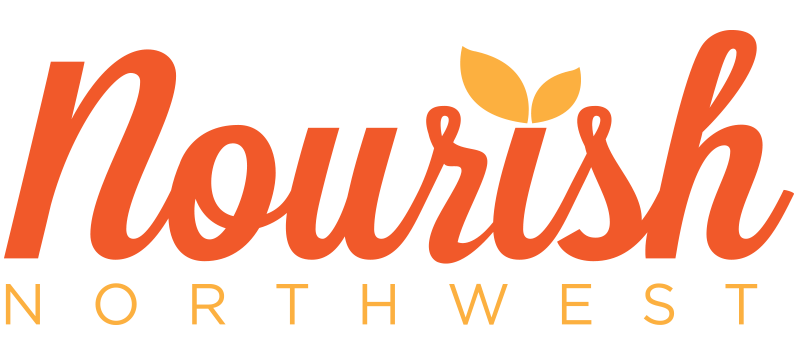From Birth to Birthday: 6 Things I Learned About Feeding a Baby
Post by Paula Jahn, Dietitian and Co-owner at Nourish Northwest
Before I had my son, I had certain ideals about what feeding a baby would look like. Some of them came easily, like making my own baby food. Others were a lesson in letting go. I will preface this by saying that we are fortunate to have had minimal feeding issues. Breast feeding came easily and my son accepts most foods (at least so far). Below is a list of the main things I learned about feeding an infant.
1. Breast milk is more amazing than I ever knew. Well, at least intellectually. Before I became a mother, I was a proponent of breast feeding. As a dietitian, I am acutely aware of the health benefits. I had positive breast feeding role models in my life in my mom and sister. I witness many committed friends with struggles work with lactation consultants and find joy and fulfillment in it. What didn’t really hit me about breast feeding until I experienced it is this: One day, when he was almost 6 months, I looked at my son’s glorious baby thigh chunk and thought, “Wow, nothing has entered his body except what I produced from mine.” He went from a scrawny, wriggling newborn to THIS:
2. A good pump is essential. Being away from the baby isn’t easy, especially in the early months. While I am fortunate to own a business and can take my son to work most of the time, there are days when that is not practical. When I was away, much of my anxieties surrounded feeding. Will it affect my supply? Will he accept a bottle when I’m gone? (He did go on bottle strike around 3 months, which really added to the stress). What happens if I can’t get a chance to pump? Answer: Engorgement and embarrassing let-down in public. I can’t imagine getting through that time without a near-medical grade pump.
3. Experiencing simple food through the eyes of a baby is enlightening. In some ways, having a baby has obliterated my efforts to eat mindfully; in other ways it has enhanced them. I love watching his face as he tries a new food. I often eat with him, and imagine I am tasting the food for the first time. In the last year, I have really appreciated the sweetness of carrots and squash, the zest of ginger, and the tartness of apples.
4. Some pediatricians give poor advice. From my own experience and from what I hear from other moms, many doctors are not giving the best, up-to-date feeding advice. Ours told me to start rice cereal and other solids at our 4-month check up (when my son was not even 4 months yet). The World Health Organization says: “Breastfeeding is an unequalled way of providing ideal food for the healthy growth and development of infants; it is also an integral part of the reproductive process with important implications for the health of mothers. As a global public health recommendation, infants should be exclusively breastfed for the first six months of life to achieve optimal growth, development and health.” The American Academy of Pediatrics agrees: Solid foods should be introduced around 6 months of age. Besides being out of date, that advice lacks creativity. We can do better than rice cereal.
5. Dogmatic feeding methods are unrealistic. Before I delved in to solids, I researched baby led weaning (BLW), which was a new approach for me. Much of the philosophy resonates with me. I like the idea of allowing my baby to explore his food in its real form. His first food was steamed delicata squash, cut up into sticks, just like the BLW folks say. For me, it became apparent that BLW all the time is unrealistic. After all, I love pureed vegetables, eaten with a (gasp) spoon. Pureed soups, mashed gingered sweet potatoes?! How could I deprive anyone of those? It turns out that a combination of purees and finger foods have worked for us since the beginning. My baby could pick up and easily eat bananas, mango, avocado, cooked apple and pears, steamed sweet potato and squash. Early on, I would puree oatmeal, beans, lentils, peas, carrots, beets, brown rice. Gradually, more texture became acceptable and now I seldom need the blender.
6. Sometimes, it’s not organic. When the only thing your baby’s body has ever encountered is breast milk (from a mother who eats a lot of nutritious food), it is difficult to not be hyper-vigilant about introducing solids. For the first few months, I was careful to provide only whole, organic, homemade food—seasoned with spices, but not salt. Then I turn around, and a well-meaning friend or relative slips him a bite of a cookie or a hunk of cheese. The fact is, other people will feed my child. Gradually, I started to relinquish some control. I am still conscientious, but occasionally it’s processed, salted and maybe even has some sugar added. As my son nears his first birthday, I am confident that he had a fun, nutritious and varied introduction to solid food. I am excited to continue to explore the world of food with him as he enters toddlerhood.




